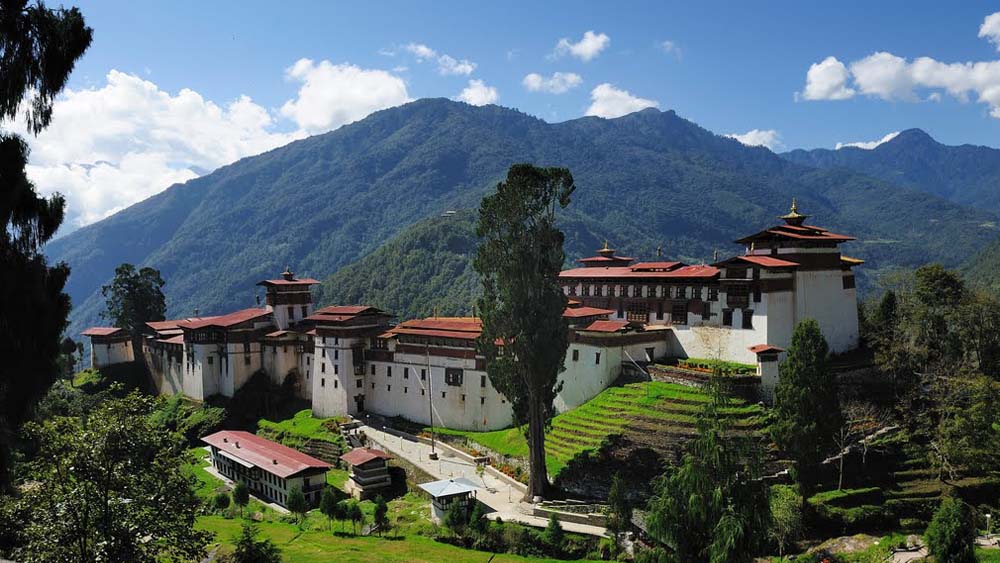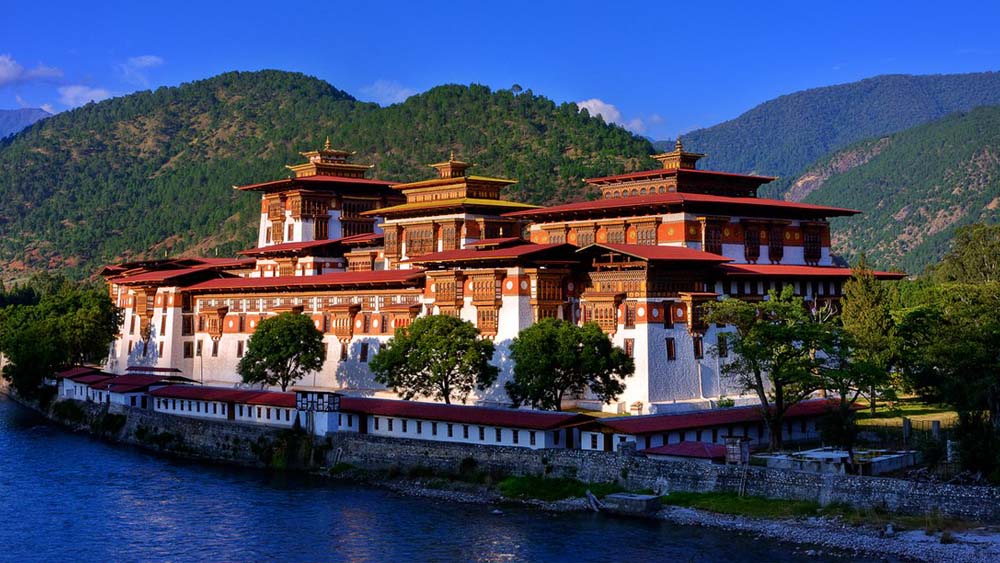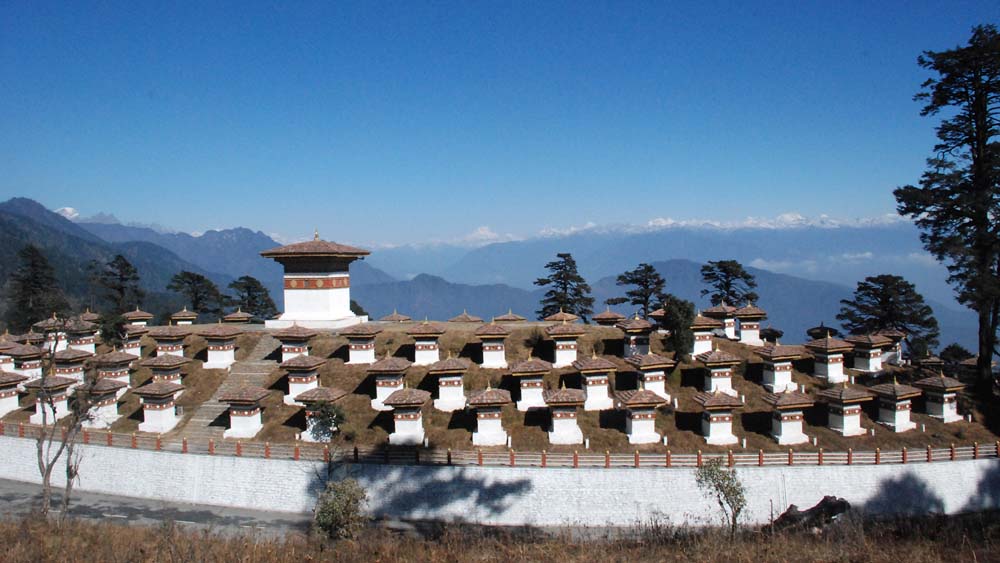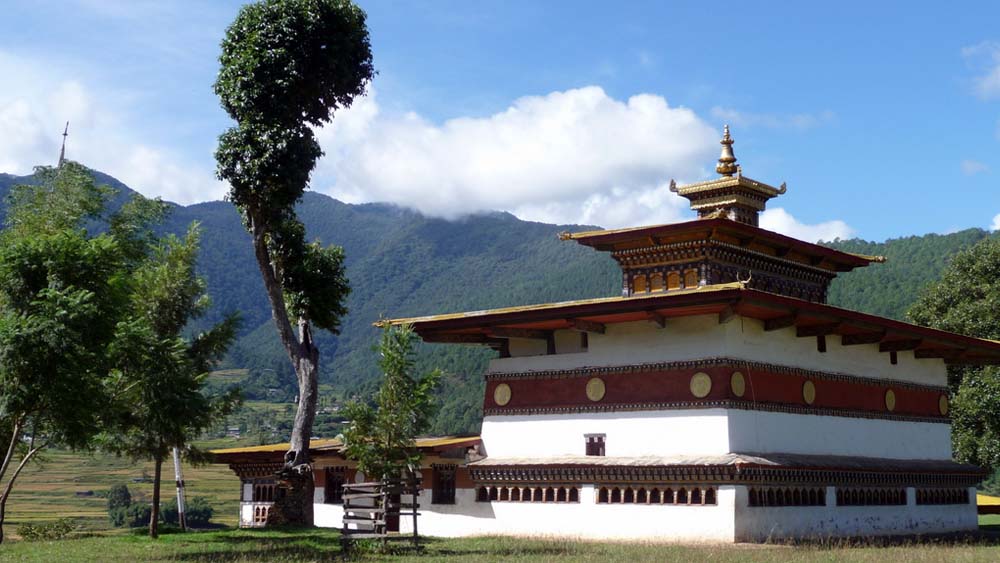Attractive Tourist Places
Thimphu
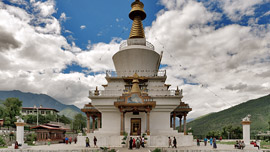
In Thimphu, the capital of Bhutan, visit its colourful weekend market and quirky shops, museums and landmarks like the National Memorial Chorten, built by the third king His Majesty Jigme Dorji Wangchuck. This small city was established as the capital in 1961 and is famous for being the only capital in the world without traffic lights!
Dochu La Pass
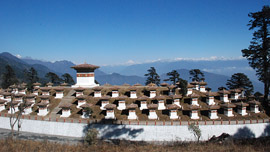
Dochu La Pass with its fluttering prayer flags and views over the majestic Himalayas, takes your breath away on a clear day. Visit the highly ornate Drukwangyal Lhakhang (temple) and the 108 chortens, built by the Queen Mother Ashi Dorji Wangmo Wangchuck to honour the Bhutanese soldiers who were killed when fighting the Indian rebels in 2003.
Taktsang Monastery
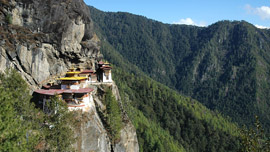
High above the Paro valley, this monastery – known as the Tiger’s Nest – perches on a rocky mountainside at 3,000m. It was built in the 8th century, when legend has it the 2nd Buddha, Guru Rimpoche, meditated here, having flown from Kurtoe valley on the back of one of his consorts who had taken the form of flying tigress. To Bhuddhist pilgrims this is one of the most sacred sites in the Himalayas, to anyone it has to be one of the most spectacular.
Drukgyel Dzong
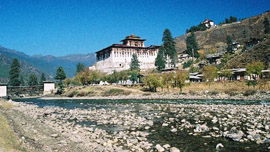
Let the ruins of this dzong tell you a tale of how Bhutanese warriors defended Bhutan from the invaders from the north in the 17th century. This dzong was built by Zhabdrung Ngawang Namgyal in 1646. Though largely destroyed by fire in 1951, the outer walls and the central tower remain an imposing sight. On a clear day, treat yourself with a splendid view of Mt. Jumolhari from the approach road to Drukgyel Dzong.
Rinpung & Ta Dzong
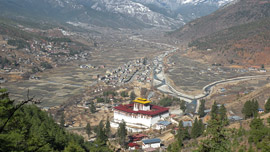
In the fifteenth century local people offered the crag of Hungrel at Paro to Lama Drung Drung Gyal, a descendant of Pajo Drugom Zhigpo. Drung Drung Gyal built a small temple there and later a five storied Dzong or fortress which was known as Hungrel Dzong. In 1646 the Dzong was reconsecrated and established as the administrative and monastic centre of the western region and it became known as Rinpung Dzong.
Punakha Dzong
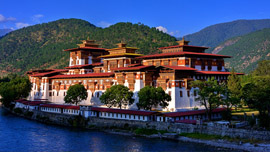
Popularly known as the Punakha Dzong, Punthang Dechen Phodrang was built in 1637 by the Zhabdrung. The gigantic Dzong was damaged 6 times by fire, once by flood and once by an earthquake. On 1907, the first king of Bhutan, Ugyen Wangchuck, was crowned here. The Machen Lhakhang, a temple inside the Dzong enshrines the mummified body of the Zhabdrung who passed away in retreat here in 1651. The spectacular Kuenrey (assembly hall) in Punakha Dzong is open to the tourists.
Chimi Lhakhang

Chimi Lhakhang is a very popular and revered temple that lies on the periphery of the fertile valley of Lobesa, where the borders of Thimphu, Punakha and wangduephodrang districts meet. Being dedicated to Lama Drukpa Kuenley, the Divine Madman, the temple is popularly considered to be a temple of fertility.
Trongsa Dzong
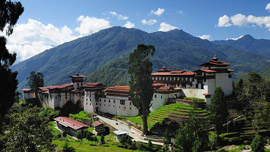
The Dzong dominates the town of Trongsa. Perched above the Dzong, the actual town is little more than one street. Many of the town’s inhabitants are of Tibetan origin and so you may have the chance try some Tibetan specialities here. The new museum situated in the 300 year old Ta Dzong, watch tower, provides an insight into the religious history of Bhutan, the significance of Trongsa in the history of the Kings of the Wangchuck dynasty.
Gangtey
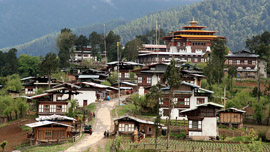
This beautiful glacial valley lies at 2900m. After climbing up through dense forests dripping with lychen, the wide, open expanse of dwarf bamboo can come as a surprise. The valley boasts two beautiful meandering rivers, Nakay Chhu and Gay Chhu. Perched overlooking this beautiful, almost flat valley is the village and monastery of Gangtey. As well as the black-necked cranes that roost here in the winter, there are also barking deer, wild boar, red fox, leopard and Himalayan black bear.
Bumthang

It is believed to be the area where Buddhism first came in the country. The town is referred to as the spiritual and cultural centre of Bhutan. Two of the well known temples of the region are Kuje Lhakang and Jampey Lhakang. There is also the Jakar Dzong here to see. Bumthang also hosts two festivals every year in September by the name of Tamshing Phala and Thangi Mani. The town is known for the produce of apples.
Rukha
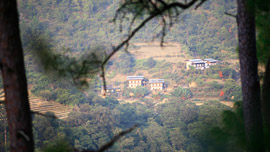
A remote village in the Jigme Dorje Wangchuk National Park, Rukha is a hidden jewel. Accessible only by a precarious rope bridge, this collection of 20 houses dotted around the hillside are built in the traditional style with steep steps leading up to the first floor with the kitchen on the outside. Experience the other face of Bhutan close up with a homestay in this hospitable rural community.

